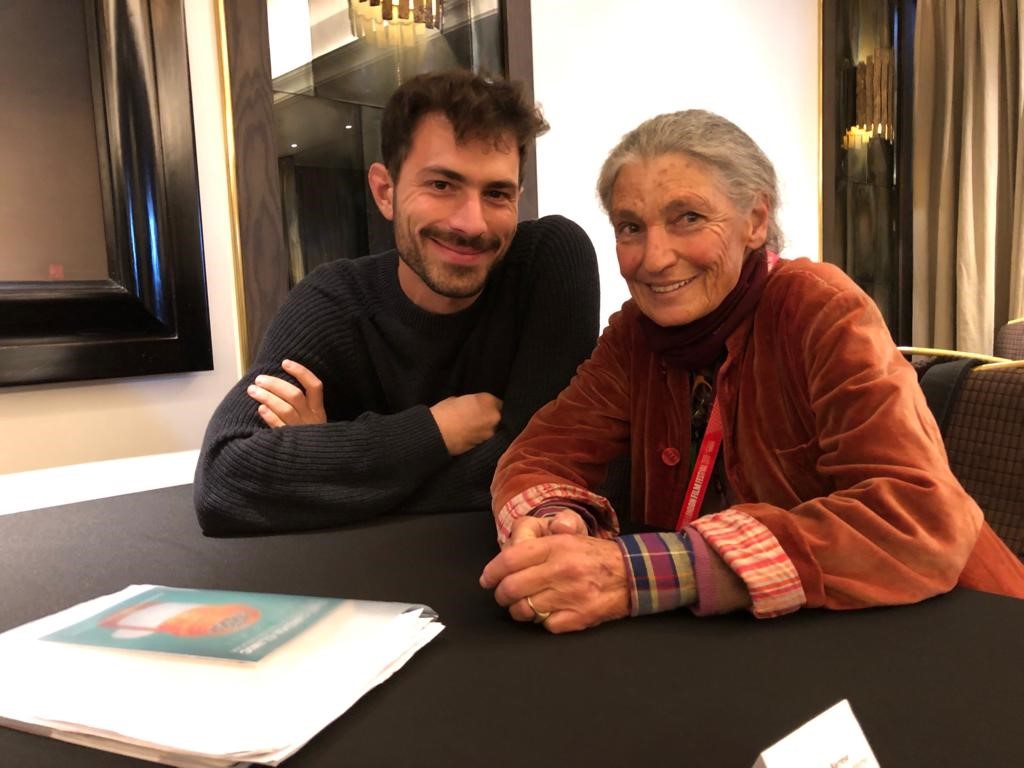Film Review by Khalid Ali, film and media correspondent
‘The Disappearance of My Mother’, Beniamino Barrese, Italy 2019, showing at the London Film Festival 2019.
Benedetta Barzini is a 76-year old retired lecturer who taught fashion studies at the University of Urbino in Italy. She has strong opinions about the exploitation of women in the fashion industry: ‘’Photographers ‘shoot’ a model in a photo-session. Models are seen as prey and men as their hunters’’. She believes that media equates ‘youth with beauty’: ‘’Youth is seen as life and old age as death”. In the early 70’s Benedetta was a glamorous supermodel, the first Italian woman to feature on the cover of ‘Vogue’ magazine and a muse to Andy Warhol and Salvador Dali. Following a successful career in modelling and acting, she became an iconic figure as a feminist denouncing ‘women objectification’ in the fashion industry. She condemned ‘photography’ as a vacant exercise failing to capture the essence of life in an image; ‘’the camera lens is the enemy. What truly matters remains invisible’’. As an older woman, Benedetta wants to disappear from the limelight, and retreat into a life of meditation bonding with nature. She ‘wants to die when she is still alive’’.

Beniamino Barrese is Benedetta’s son; ‘The disappearance of my mother’ is the documentary film he made following his mother’s decision to live life as she wants, a decision she was denied all her life. Using a hand-held camera, Beniamino films his mother non-stop for months, awake, asleep, cooking and answering his probing questions about the reasons why she wants to escape her privileged existence. The mother and son banter offers great insight into several themes; growing old and frail, the nature of memories, but most importantly their creative plan to ‘document her disappearance’. Benedetta sees the film as ‘an act of separation’. She is not afraid of dying, and starts planning for ‘going from here to nowhere’. Constantly challenging her son, Benedetta is not an obedient actress in a film; she wants to have her say about how the film ends. It is obvious that she dislikes being filmed, but goes along with her son’s constant intrusion as an ‘act of love and understanding’. Still her reasons for agreeing to be filmed remain as enigmatic as her character.
Beniamino’s motivations behind documenting his mother’s bold decision to ‘escape’ originate from deeply rooted love and admiration for this elegant iconic woman; he describes her as ‘too beautiful, too smart, too funny, too intelligent, too aggressive, too incredible’. Documenting their conversations on film is his way of getting to know his mother better using the tools he knows best as a photographer. He is aware that there is an exploitative element in documentary film-making, hence he allows himself to be embarrassed and outwitted by his mother on screen.
A narrative approach has been explored as a tool for understanding the lives of those close to us.[1] The film portrays the three stages of such narrative: evaluating one’s past, describing a transition phase with a focus on the impact on family, and leaving a legacy of the shape of what the future holds for loved ones when the interviewed person is no longer around. In making a tender film full of poignant moments, Barrese delivers superbly in sharing special ‘transitional’ moments in the life of an exceptional woman as well as leaving the audience admiring the skill and artistry of a talented story-teller.
[1] Glendon R Tait, Catherine Schryer, Allan McDougall, et al 2015. Exploring the therapeutic power of narrative at the end of life: a qualitative analysis of narratives emerging in dignity therapy. BMJ, https://spcare.bmj.com/content/1/3/296.